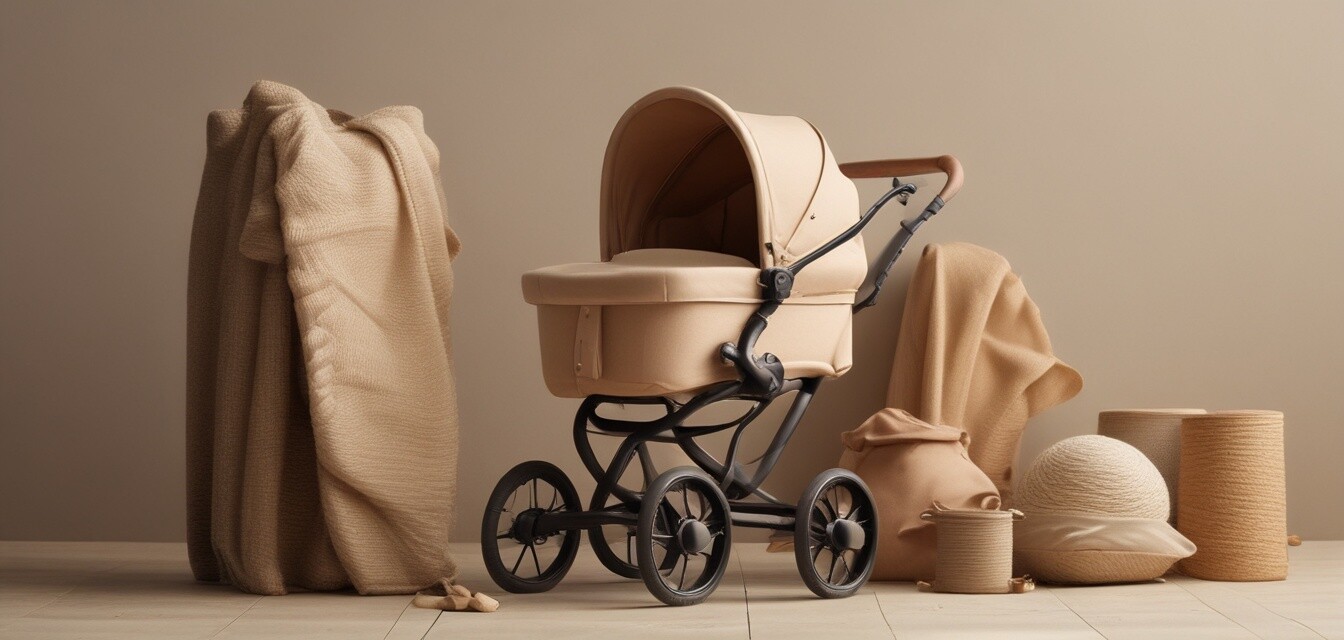
The Impact of Climate Change on Stroller Materials
Key Takeaways
- Climate change is prompting stroller manufacturers to seek sustainable materials.
- Biodegradable and recycled materials are on the rise in stroller production.
- Consumers are increasingly interested in eco-friendly products.
- Innovation in safety and durability continues alongside sustainability efforts.
The conversation around climate change has extended beyond environmental policy into everyday consumer products, including baby gear like strollers. The pressure to adopt sustainable practices is influencing stroller manufacturers' decisions regarding materials and designs. This article explores how climate change concerns are driving innovation in stroller manufacturing, leading to more eco-friendly materials and production processes.
Understanding the shift towards sustainability
As consumers become more conscious of their environmental impact, stroller manufacturers are responding with greater urgency. The demand for environmentally friendly products is reshaping the market landscape. Many parents now prioritize sustainability alongside safety, functionality, and design when selecting strollers.
The Role of Climate Change in Material Selection
Climate change is not only a pressing global issue; it's also a catalyst for change in product manufacturing. Traditional stroller materials such as plastic and synthetic fabrics have come under scrutiny, leading to a rise in alternative materials. Below are some of the most significant materials being developed as part of this effort:
| Material | Description | Benefits |
|---|---|---|
| Bamboo fabric | A natural fiber derived from bamboo plants. | Biodegradable, soft, and antimicrobial properties. |
| Recycled plastic | Plastic materials that have been processed for reuse. | Reduces waste and lowers energy consumption in production. |
| Organic cotton | Cotton grown without harmful pesticides or chemicals. | Safer for babies, better for the environment. |
| Hemp | A durable, natural material derived from the hemp plant. | Strong, sustainable, and requires minimal water to grow. |
Consumer trends in sustainable strollers
The recent trends indicate that consumers are willing to pay a premium for sustainable products. This growing interest plays a significant role in accelerating the adoption of innovative materials. Here are some trends identified in the stroller market:
- Increased demand for products made with sustainable materials.
- Interest in brands that demonstrate transparency in their manufacturing processes.
- Preference for multi-functional strollers that reduce the need for multiple products.
- Collaborations between brands and eco-friendly material suppliers are on the rise.
Innovative practices in stroller manufacturing
Manufacturers are not just changing the materials they use; they are also innovating their entire production processes. Here are some of the notable practices being adopted:
- Eco-design: A design approach that considers environmental impacts throughout the product lifecycle.
- Waste reduction: Implementing practices to minimize waste during production.
- Energy-efficient production: Utilizing renewable energy sources to power manufacturing facilities.
- Recyclable packaging: Using environmentally friendly packaging solutions that are recyclable or biodegradable.
The impact of regulations and certifications
As the push for sustainability grows, regulations and certifications have emerged to guide manufacturers and enhance consumer trust. Some key certifications to look for when shopping for eco-friendly strollers include:
| Certification | Description |
|---|---|
| Global Organic Textile Standard (GOTS) | Certification for textiles made from organic fibers. |
| OEKO-TEX Standard 100 | Tests for harmful substances in textile products. |
| Cradle to Cradle Certified™ | A certification focusing on sustainable product design. |
Parental influence in the market
The evolving market landscape is heavily influenced by parents who decide what products make it to retail shelves. Parents are vocal about their concerns regarding climate change, driving manufacturers to adjust their practices to meet customer expectations. For a deeper understanding of how to evaluate stroller products, check our Buying Guides section.
Conclusion
As climate change continues to shape industries around the world, the stroller market is no exception. The demand for sustainable materials is leading manufacturers to innovate, ensuring that parents have access to strollers that prioritize both safety and environmental responsibility. By opting for eco-friendly products, consumers can play a pivotal role in addressing climate change and contribute positively to the environment. For more insights on evolving trends in the baby stroller industry, stay updated with our News and Trends section.
Pros
- Environmentally friendly materials reduce carbon footprint.
- Innovative designs improve functionality and convenience.
- Potential cost savings through recycling and reusability.
Cons
- Higher upfront costs for eco-friendly products.
- Limited availability of certain sustainable materials.